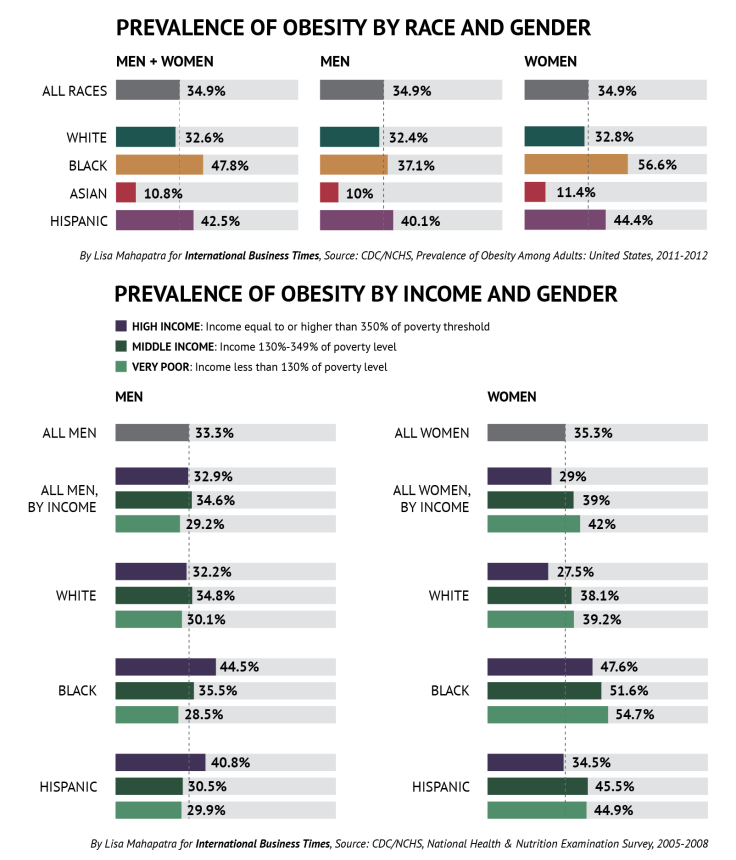Here’s How Obesity Relates To Gender, Race And Income In The US [Charts]
In impoverished countries, poverty is correlated with malnutrition and dangerously low body weight. In advanced economies like the United States, where food is plentiful, many researchers have put forward the theory that the opposite it true, that poor people are more likely to be obese.
In developed economies the quantity of food available to people is less of a differentiator than the quality of food that’s available. While low-income people have access to food, they have less access to quality, healthy foods than high-income people do.
However, obesity might not be as closely related to poverty as it is to other factors, like race and gender.
In fact, a recent study by the Centers for Disease Control and Prevention found that for black and Mexican-American men, obesity rates actually increased with income.
For women, the correlation between obesity and poverty seemed to bear out the theory. However, there is still a higher correlation between race and obesity than income and obesity.

For example, as income increased, obesity rates for both black and white women decreased. However, at the higher income level, obesity rates for white women fell much more than for black women.
Also, black and Hispanic women are much more likely to be obese to begin with. Obesity rates among black and Hispanic women are between 7 and 20 percentage points higher than those of white women in all income groups.
Note: The first chart uses data from 2011-2012. The second chart uses data from 2005-2008. The average obesity rate in the U.S. didn’t change much in that time period, which makes the two datasets comparable. However, the gap in obesity rates among men and women closed -- which is why in the first chart the national average is used as the point of comparison, but national gender averages are used in the second chart.
Here’s a map of obesity rates around the world, from a story that was published in July 2013.
© Copyright IBTimes 2024. All rights reserved.






















